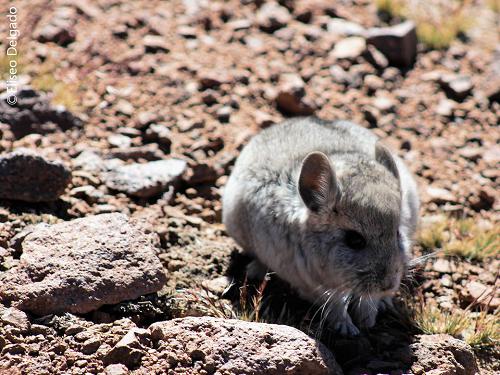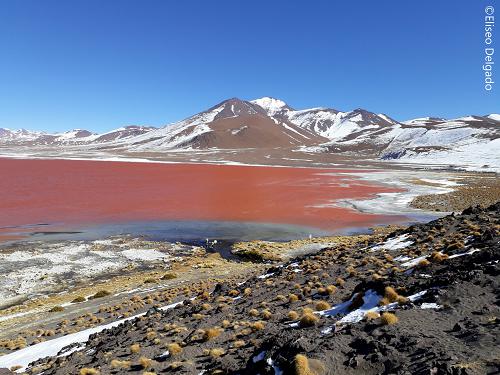Romeo Rojas Estrada
Chinchillids are endemic South American rodents that occur along the Andes. During a routine inspection in the National Reserve of Andean Fauna “Eduardo Avaroa”, a small population of Short-tailed chinchillas was registered in Bolivia after 80 years. The Shorth-tailed chinchilla (Chinchilla chinchilla) is listed as Endangered (EN) by the IUCN and was believed extinct in Bolivia, therefore its natural history is very poorly known. In order to plan conservation actions, it is fundamental to know where the species occurs today. Furthermore, our focus on home range analysis will be an important aspect in investigating other behavioral and ecological questions.

The Short-tailed chinchilla (Chinchilla chinchilla) in the National Reserve of Andean fauna “Eduardo Avaroa” in the southern department of Potosí, Bolivia; Photography: ©Eliseo Delgado.
In Bolivia, there are currently four species of mammals that are locally in greatest risk of extinction (listed as Critically endangered), one of which is the Shorth-tailed chinchilla (Chinchilla chinchilla). Additionally, this species was also believed extinct in Bolivia in previous conservation evaluations in 1993 and 2006. On 2017 during a routine inspection in the “Laguna Colorada” region of the National Reserve of Andean Fauna “Eduardo Avaroa”, the Park Ranger Eliseo Delgado discovered six Short-tailed chinchillas of different ages and sexes.

The project site “Laguna Colorada” is located in the National Reserve of Andean fauna Eduardo Avaroa in the southern department of Potosí, Bolivia, this region.
This Reserve is a flagship conservation unit of the Bolivian National Park system, but its current management plan does not include provisions to protect the newly found population of Short-tailed chinchillas. This is one of the reasons I decided to do this work, because basic knowledge of the natural history for this species is very poor, and to make protection plans it is important to first investigate this important aspect.
In this project we will focus on the home range. We are going to select four Short-tailed chinchillas to install radio collars, two males and two females. We are going to use GPS transmitters, which are GPS/store on board terrestrial systems. For the home range analyses we are going to use the Minimum Convex Polygon (MCP) and Kernel Density Estimation (KDE). We will also describe the habitat within each home range and carry out workshops with the nearby communities, especially with the local actors like the Park Rangers of the Reserve, communities and the Tourism Companies of Uyuni.
One of the results of this project will be new information about the natural history of the Short-tailed chinchilla that will be used to propose the implementation of a protection plan within the Reserve’s official Management Plan. Also, the delimitation of conservation areas based on the home ranges for the population of the Short-tailed chinchilla in the Reserve. In addition, the results of this project will generate an adequate monitoring protocol for the Short-tailed chinchilla, as well as park rangers trained to collect more information about its population.